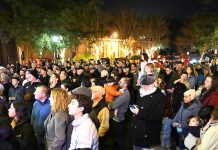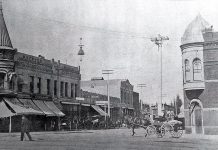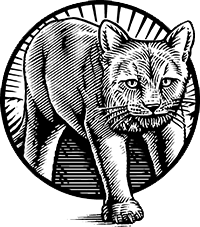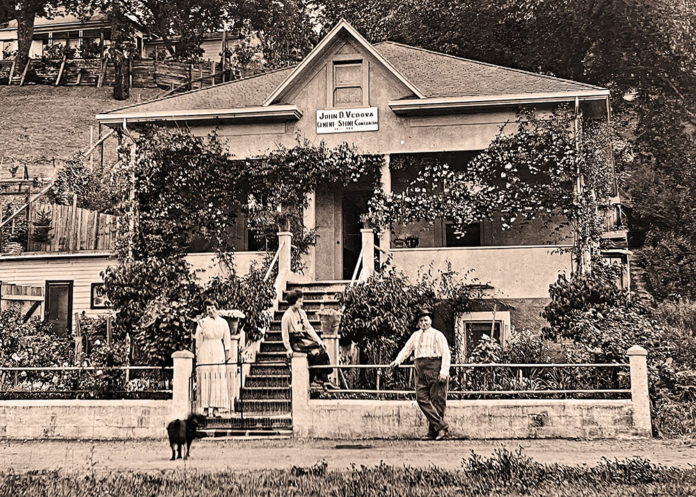
One of my earliest memories is from the early 1970s when I visited my elderly Italian aunt, whom we called Zia Elisa, at the nursing home across from Van Meter School on Los Gatos Boulevard. She was near death, and my grandmother insisted I pay a last visit to the woman my family spoke of with such reverence.
It was not until recently, when I came across a postcard of her and her husband standing outside of their Villa Avenue home, that I realized that my Zia was married to one of the most prominent citizens in 1920s Los Gatos: cement contractor Giovanni Della Vedova.
John Vedova was born in 1877 in the village of Castelnuovo, Italy, located in the northeast of Italy. In 1907, he and his wife, Elizabetta Contardo Della Vedova, boarded the ship La Savoie in Le Havre, France, eager to cross the Atlantic and establish a new life in America. In New York City, the arriving passenger list noted that Mr. Vedova was 5’7″ with auburn hair and eyes, and he had a total of $156 in his possession. The couple eventually made their way to San Francisco before settling in Los Gatos in 1911; my grandmother said that the family settled here because the hills surrounding the town reminded them of northern Italy. Here, Vedova quickly became one of the foremost cement contractors in town.
Eager to become an American, Vedova petitioned to be a naturalized citizen in 1916. According to his Petition of Naturalization, Vedova vowed that he was “not a polygamist, was “attached” to the principles of the Constitution of the United States, and that he renounced allegiance to Victor Emmanuel III, the King of Italy.” The History of Santa Clara County (1922) describes Vedova as a “loyal citizen of his adopted country and one who favors and aids all progressive movements.”
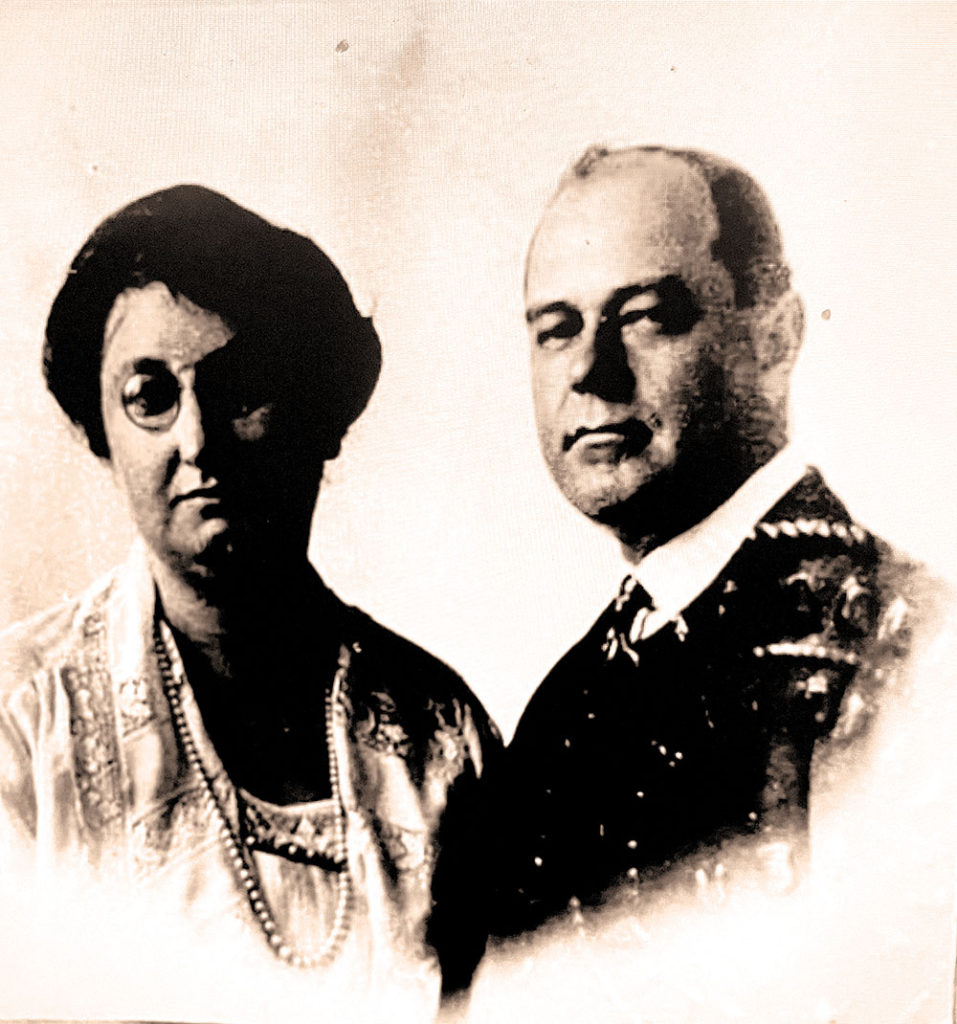
Active in the community, Vedova was involved in at least two fraternal benefit societies. He was a member of “Woodsmen of the World,” which, among other philanthropic endeavors, raised money to support America’s war effort in World War I and provided financial assistance to the families of soldiers. He was also an officer in Los Gatos Grove Number 206 of the United Ancient Order of Druids along with many other Italian men in town. The order’s motto was and still is “united to assist.”
In 1920, Vedova built a home for his family at 56 Villa Ave. While the Vedovas had no children of their own, they adopted a niece and nephew whose fathers were killed in World War I. That same year, Mr. Vedova sent a ticket to my grandfather, Adamo Contardo, for passage to the United States and the opportunity to escape post-war Italy. The Contardos eventually built a home at 466 N. Santa Cruz Ave., and my grandfather established himself as one of the most sought-after stone masons in town.
During his career, John Vedova was awarded numerous cement projects in the town of Los Gatos, and he regularly employed a dozen men or more to work on his crews. In June of 1917, he was the low bidder at $167.67 for curbs, gutters and crosswalks throughout the town. Later that summer, he was awarded a $148.95 contract for installing a five-foot cement walk in front of the town hall. In 1924, he completed an $18,000 contract with the city of Los Gatos for additional concrete work.
In addition to public projects, Vedova did concrete work on many of the fine homes in the Los Gatos Hills. On occasion, his wife Elizabetta and my grandmother Albina would help to mix the cement for a big pour. I remember how my grandmother spoke with pride as to how the two women helped their husbands in their work and, as a result, contributed to the development of the town of Los Gatos.

In 1923, the Vedovas built a home on Bachman Avenue and, as his business thrived, Vedova became one of the more prominent citizens in the community. As was common at that time, leading citizens were frequently included in the social column of the town newspaper, and John Vedova was a regular topic. In September 1927, the Los Gatos Star reported that Vedova sported a “well-fitting fine new swimming tank to the John Spring estate [on] Overlook Road.”
But sometime in the winter of 1927, John Vedova became gravely ill. On May 10, 1928, the Los Gatos Star reported that Vedova, after suffering an unknown illness for several months, had, contrary to rumor, not sold his business and was ready to return to work. But in October of that year, it reported that his nephew, August Vedova, was taking over the business following the death of his uncle. It was renamed “Vedova and Forasiepi” and specialized in cement floors, artistic rock work, swimming pools and decorative fishponds.
Giovanni Della Vedova’s life was cut short at the age of 51, but his legacy in Los Gatos is lasting. Soon after my visit to the nursing home in 1973, my Zia Elisa passed, having outlived her husband by 45 years; she never left her beloved Los Gatos. The contents of the Vedova home were distributed, and I was allowed to select a small item to remember her by. I chose a teapot that is still displayed in my china cabinet.
The original Vedova home on Villa Avenue was demolished in 2011 when the new library was constructed, and there is a memorial to John Vedova at that site.
Years ago, I remember seeing the occasional “Vedova” stamped on an old sidewalk in town. Perhaps somewhere one still exists. If it does, I’d love to see it.



